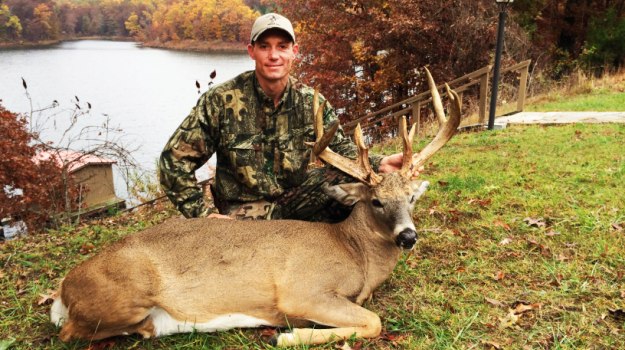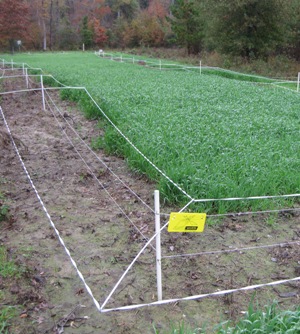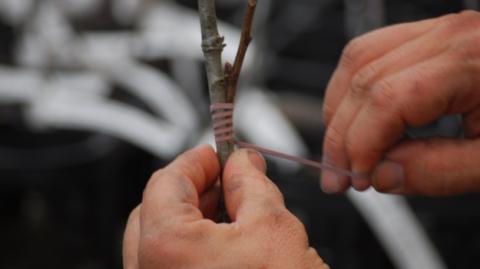
Editor’s Note: Brian Hicks lives in southeast Texas near Beaumont. He deer hunts about 200 acres of private lands and two different national forests each season. Both of the national forests that he hunts have heavy hunting pressure. Yet, each season he consistently takes older-age-class bucks that will score 120 to 150 on Boone & Crockett.
At this time of the year, I’ll get a soil test on my property, prepare my ground to plant and plant cow peas. I'm very good friends with a wildlife biologist who has more than 50 years experience in managing whitetails in our section of Texas. So, I plant whatever he tells me to plant, and when he tells me to plant it. For a spring and summer crop in our area, my friend recommends cow peas. I believe that one of the best approaches of what to plant and when to plant it is to talk to your neighbors who manage their deer. Find out what they're planting and how successful their plantings have been. Also talk to the wildlife biologist responsible for your region or the county where you'll going to be hunting to get his suggestions.
On my private 200 acres, I’ll plant a 5-acre food plot in one spot and a 3-1/2-acre food plot in another location. One of the things we talk about the most in food-plot management is the type of seeds we’ll plant. One of the things we talk the least about is the ground in which we’ll plant that seed. However, I've learned that getting a good soil sample to know how much lime and fertilizer you need to put out before you plant is often more critical to a food plot planting than the seeds that you put in the ground. I try to lime my land first, next turn the land and then put the fertilizer out at the same time I'm planting my seed. Then I should get maximum yield on the crop I'm planting for deer and turkeys. I've seen a lot of people spend money on seed and fertilizer and then be amazed that their crops don’t grow. That’s why every year I take a soil sample, and every year I put the right amount of lime on to neutralize the soil. Once I finally plant the seed and put out the fertilizer, I've done everything I know to do to produce the best crop I can and get the most tonnage I can to feed my deer and turkeys.
 Usually, at this time of the year in the spring, before I plant, I also start trying to eliminate predators, primarily coyotes, bobcats and an occasional coon and possum in my region. Depending on where you live, make sure that you legally can harvest predators in the spring and the summer. In Texas we can, but in some states you can’t. Many deer hunters consider harvesting coyotes and bobcats with predator calls a fun way to remove the predators, and I like to predator hunt that way too. But I’ve found the best way to get rid of the most predators from my 200 acres of private land is to also use snares and traps. I try to focus on coyotes and bobcats, because these two predators kill turkey poults, hens sitting on their nests and newborn fawns. I’ll harvest about 10 to 20 predators off my 200 acres of private land every year.
Usually, at this time of the year in the spring, before I plant, I also start trying to eliminate predators, primarily coyotes, bobcats and an occasional coon and possum in my region. Depending on where you live, make sure that you legally can harvest predators in the spring and the summer. In Texas we can, but in some states you can’t. Many deer hunters consider harvesting coyotes and bobcats with predator calls a fun way to remove the predators, and I like to predator hunt that way too. But I’ve found the best way to get rid of the most predators from my 200 acres of private land is to also use snares and traps. I try to focus on coyotes and bobcats, because these two predators kill turkey poults, hens sitting on their nests and newborn fawns. I’ll harvest about 10 to 20 predators off my 200 acres of private land every year.
Although I prepare the land, plant green fields and burn a portion of the land, I don’t stop monitoring my trail cameras. Each year and all during the year, I'm getting more and more information about where the deer are on my private lands, and where the deer are moving on the public lands I hunt. I can find corridors that the deer use not only during the off-season but also travel corridors they use during the season. Because I scout all year long and keep my trail cameras up all year long, I get a ton of information about the deer on the lands I hunt that most other public and private land hunters aren’t getting.
I enjoy gathering that information and learning all I can about the deer I hunt. I also learn a lot about the hunters who hunt the same property I hunt. Most public-land hunters will hunt the same places year-after-year - the areas they’ve always hunted, and the spots where they feel comfortable. The problem with this philosophy is that these hunters rarely consider wind direction or use scent cover. Too, the deer in these regions have the hunters patterned much better than the hunters have the deer patterned. So, I use those hunters and my knowledge of where these hunters hunt to allow these hunters to push deer to me.
Day 2: Deer Management Is More Than Planting Green Fields
Tomorrow: Brian Hicks on Using Hunting Pressure to Your Advantage on Public Lands




























